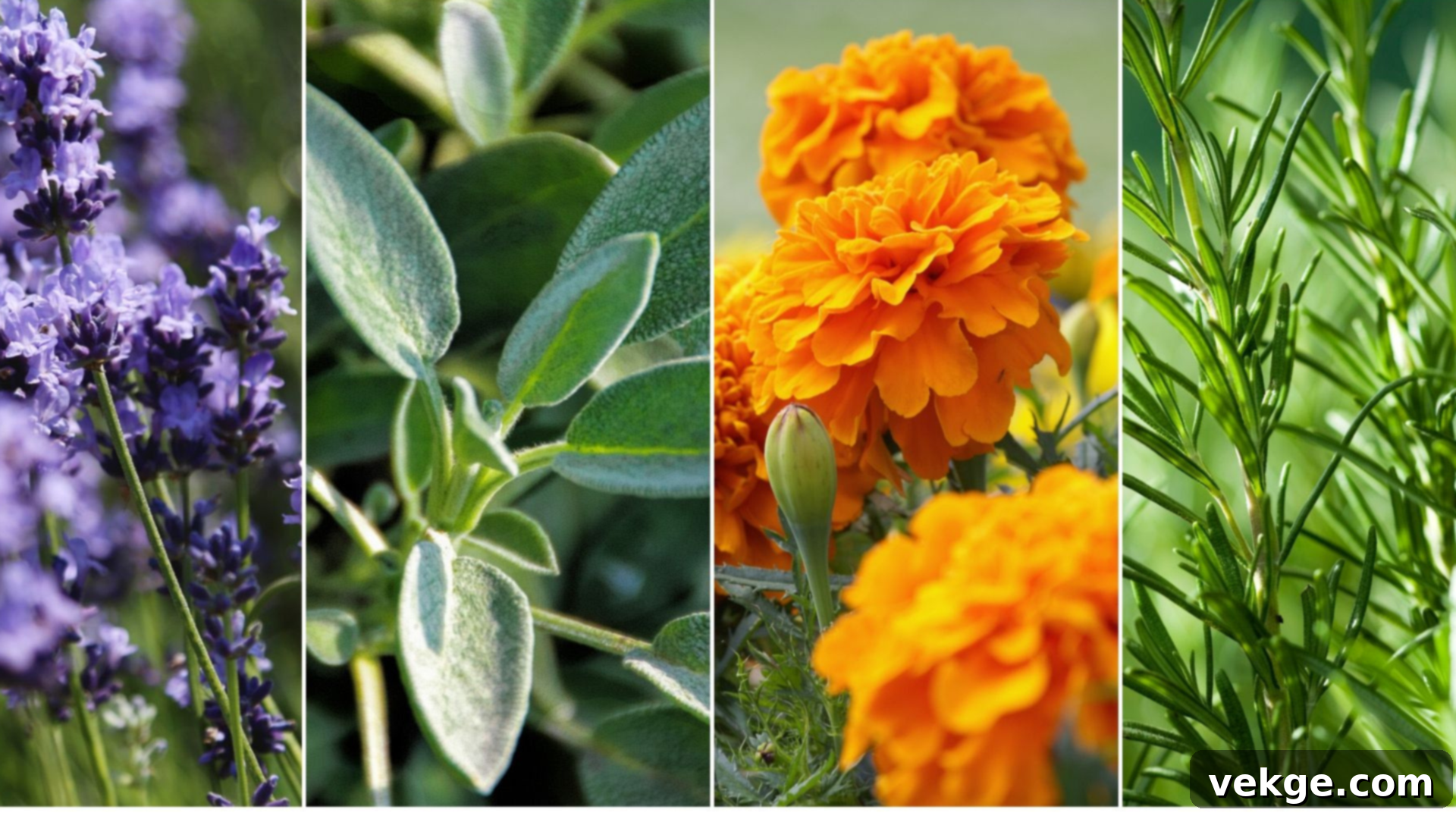Natural Fly Repellent Plants: Your Ultimate Guide to a Pest-Free Home & Garden
Flies are an unwelcome nuisance, turning serene homes and tranquil outdoor spaces into battlegrounds. The persistent buzzing, the unsanitary habits, and the sheer irritation can quickly disrupt peace and comfort. While chemical sprays and sticky traps offer temporary solutions, they often come with unpleasant odors, potential health risks, and an environmental toll. What if there was a greener, more natural way to reclaim your space?
Enter the world of fly-repelling plants. These botanical wonders offer a safe, effective, and aesthetically pleasing alternative to traditional pest control methods. By harnessing their natural scents and compounds, these plants create an invisible barrier that flies find deeply unappealing, encouraging them to seek greener, non-plant-filled pastures elsewhere. Imagine a home filled with fresh aromas and vibrant greenery, all while keeping those pesky flies at bay.
This comprehensive guide will help you discover the power of nature’s own pest control. We’ll delve into:
- The most effective fly-repelling plants for both indoor and outdoor environments.
- Strategic placement techniques to maximize their repellent power.
- Essential care and maintenance tips to keep your green guardians thriving.
- Where to find and purchase these beneficial plants and seeds.
Join us as we explore how the right plants can transform your living areas, offering a natural, sustainable, and beautiful solution to maintain a fly-free environment.
The Natural Advantage: Why Choose Fly Repellent Plants?
Beyond simply keeping flies away, incorporating these plants into your home and garden offers a wealth of benefits that chemical solutions can’t match. They represent a holistic approach to pest management, enhancing your environment in multiple ways:
- Chemical-Free Safety: Eliminate the need for harsh insecticides, ensuring a safer environment for children, pets, and beneficial insects. Enjoy peace of mind knowing your home is free from harmful residues.
- Eco-Friendly Solution: Reduce your environmental footprint by opting for sustainable, renewable resources. These plants contribute to local biodiversity and don’t harm the ecosystem.
- Aesthetic Appeal: Enhance the beauty of your living spaces with lush foliage, vibrant flowers, and interesting textures. Many repellent plants are also ornamental, adding charm to any setting.
- Pleasant Aromas: Instead of chemical smells, fill your home with refreshing, natural fragrances that are delightful to humans but repulsive to flies.
- Dual-Purpose Benefits: Many fly-repelling plants are also culinary herbs, medicinal plants, or attractive garden additions. You can enjoy fresh ingredients for cooking while simultaneously deterring pests.
- Improved Air Quality: Like all plants, many of these varieties help filter indoor air, contributing to a healthier living environment.
By choosing fly-repelling plants, you’re not just solving a pest problem; you’re investing in a healthier, more beautiful, and more sustainable lifestyle.
Top Fly Repelling Plants for Every Space
Whether you’re looking to protect your kitchen, patio, or entire garden, there’s a plant perfectly suited for the job. We’ve categorized the best options to help you decide where to start your natural pest control journey.
Indoor Fly Repellent Plants: Keep Your Home Naturally Pest-Free
These plants are perfect for smaller indoor areas like kitchens, entryways, and sunny windowsills. They’re typically easy to grow in pots and use their strong aromas to stop flies from even entering your home. Many release essential oils that flies find highly unpleasant, while some even actively trap insects, offering a direct approach to indoor fly control. These choices are safe, simple, and a natural fit for creating a tranquil indoor sanctuary.
1. Basil (Ocimum basilicum)
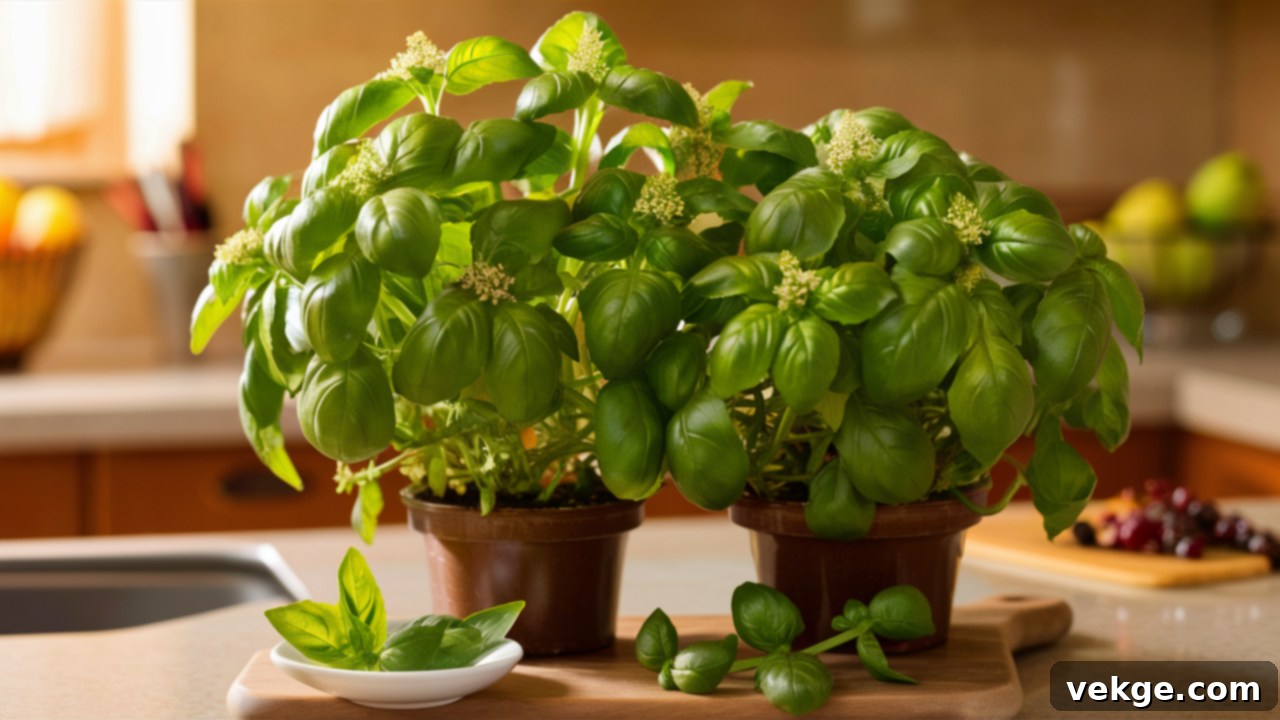
Basil is a beloved culinary herb and a powerhouse fly repellent. Its bold, aromatic scent, derived from compounds like estragole, linalool, and eugenol, is highly effective at deterring flies, especially common house flies and fruit flies. Placing basil plants near kitchen counters, windows, or pantry doors helps create a fragrant barrier against pests attracted to food sources.
Care Tips: Basil thrives indoors with at least 6 hours of bright sunlight daily. Use well-draining soil and water regularly, keeping the soil consistently moist but not soggy. Pinch off flower buds to encourage bushier growth and prevent the plant from going to seed, which preserves its robust flavor and repellent properties. Gently rubbing its leaves occasionally can release a stronger burst of its natural fly-repelling oils into the room, enhancing its effectiveness. Plus, you’ll always have fresh basil on hand for your favorite recipes!
2. Lavender (Lavandula angustifolia)
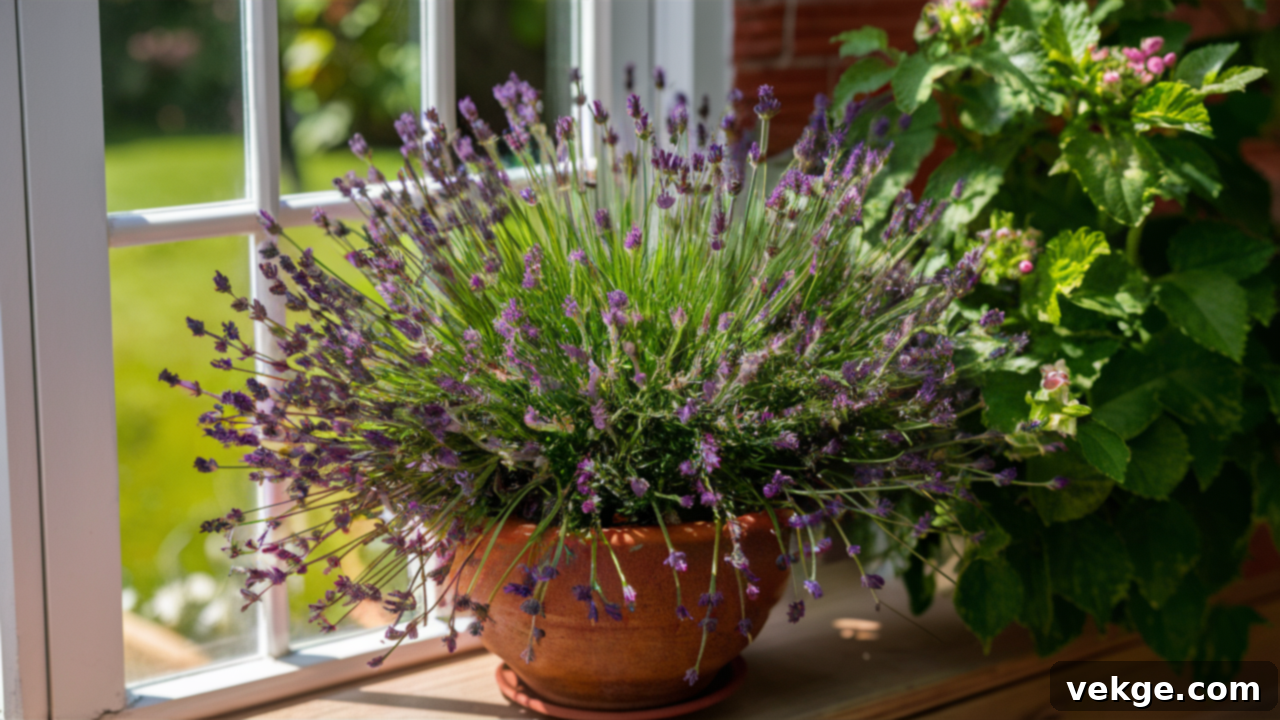
Known for its beautiful purple blooms and calming aroma, lavender is a double threat: it soothes human senses while actively repelling flies, mosquitoes, and even moths. The plant’s essential oils, rich in linalool and linalyl acetate, are responsible for its distinctive fragrance that pests avoid. Position potted lavender plants in sunny indoor spots like windowsills or on shelves near doors where airflow is good.
Care Tips: Lavender requires plenty of direct sunlight (at least 6-8 hours) and excellent air circulation to prevent fungal issues. It prefers loose, well-draining soil and should be watered sparingly; allow the soil to dry out completely between waterings to prevent root rot. Regular pruning after flowering will encourage new growth and maintain a compact, attractive shape. Dried lavender bundles can also be placed in strategic locations for continuous, passive fly deterrence.
3. Mint (Mentha spp.)
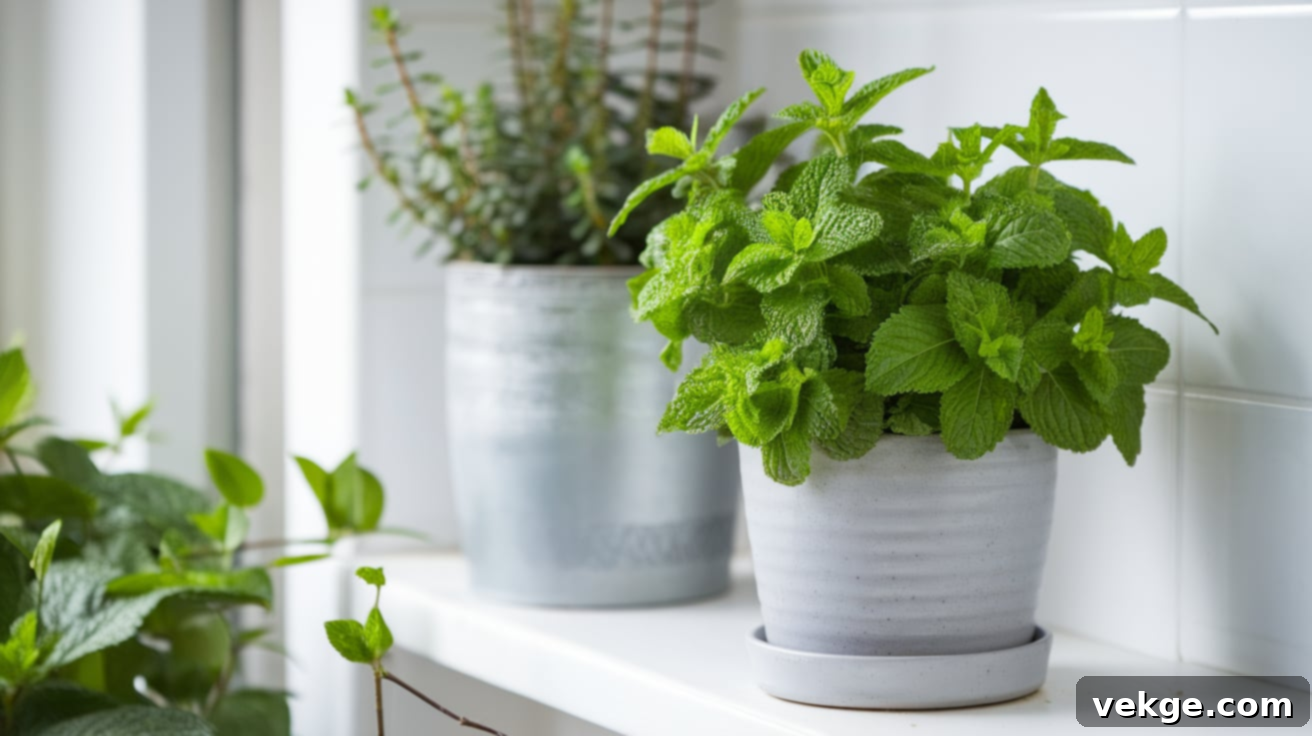
Mint, with its crisp and invigorating scent, is another excellent indoor fly repellent. Varieties like peppermint and spearmint contain high levels of menthol, which flies and many other insects find overwhelming and unpleasant. Its rapid growth makes it an ideal candidate for pots, where its spreading tendencies can be contained. Place mint near your sink, on kitchen counters, or on shelves by windows to keep flies from hovering around food preparation areas.
Care Tips: Mint plants need bright, indirect light and consistently moist soil. They can become leggy if not pruned regularly; frequent trimming will promote bushier growth and stimulate the release of more repellent oils. Keep mint slightly moist, but avoid waterlogging. While it can tolerate some direct sun, harsh afternoon sun can scorch its leaves. A major bonus is that mint leaves are ready for harvesting at any time for teas, drinks, and various recipes.
4. Lemon Balm (Melissa officinalis)

Lemon balm emits a refreshing, lemony scent from compounds like citronellal and geranial, which effectively drives flies away without being overpowering to humans. This hardy herb is adaptable and grows well indoors in pots, preferring partial sunlight to bright, indirect light. Its cheerful presence and pleasant aroma make it a wonderful addition to entryways, living rooms, or any area where flies might attempt to sneak in.
Care Tips: Lemon balm thrives in consistently moist, well-draining soil. It’s relatively low-maintenance but benefits from regular pruning to encourage dense, bushy growth and prevent it from becoming leggy. Lightly crushing the leaves can intensify the citrus scent, particularly on warmer days. Beyond its pest-repelling qualities, lemon balm is also known for its calming properties, making it a dual-purpose herb that contributes to a serene living space.
5. Carnivorous Plants (e.g., Venus Flytrap, Pitcher Plant)
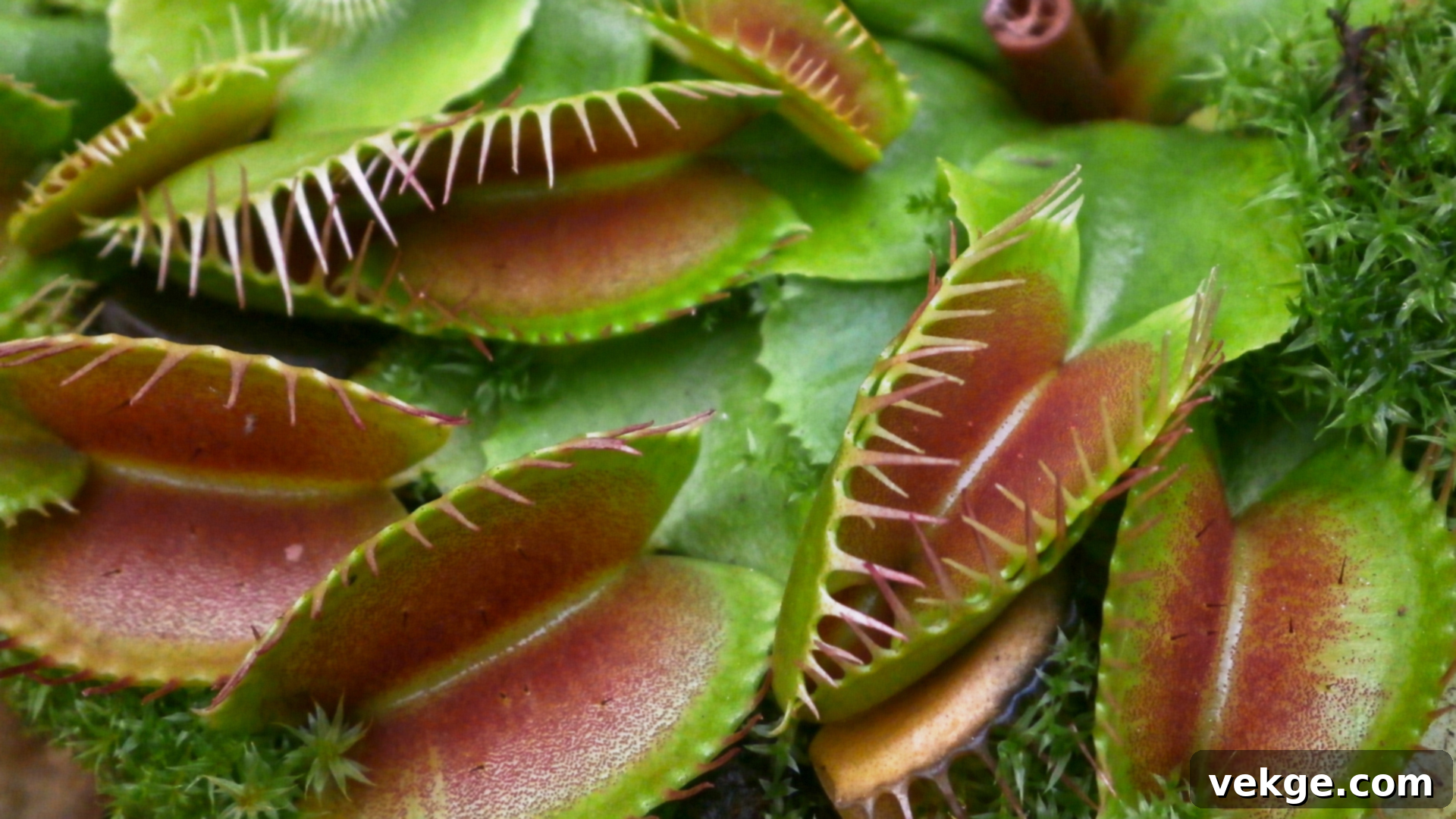
Unlike scented herbs that repel, carnivorous plants offer a direct and fascinating solution to indoor fly problems. The most famous, the Venus flytrap (Dionaea muscipula), features distinctive leaves that snap shut when triggered, capturing and digesting insects. Pitcher plants (e.g., Nepenthes, Sarracenia) lure flies with nectar into a deep, fluid-filled pitcher from which they cannot escape. These plants are excellent for managing small fly infestations and serve as intriguing conversation starters.
Care Tips: Carnivorous plants require specialized care. They need bright light (often 4-6 hours of direct sun), high humidity, and must be watered exclusively with distilled water, rainwater, or reverse osmosis water, as tap water minerals can be toxic. They thrive in nutrient-poor, acidic soil (often a mix of sphagnum peat moss and perlite). Avoid feeding them manually; allow them to catch live prey naturally for optimal health. While they demand a bit more attention, their unique method of pest control is undeniably effective and mesmerizing to observe.
Outdoor Fly Repellent Plants: Natural Protection for Your Garden & Patio
Extend your fly-free zone to your outdoor living spaces with these powerful plants. Ideal for gardens, patios, decks, and porch areas, they not only repel flies but also add vibrant color and fresh aromas to your environment. Most grow well in garden beds, borders, or large containers, and many offer additional benefits like culinary uses or attracting beneficial pollinators. Plant them strategically near seating areas, entryways, or waste bins to keep flies from spoiling your outdoor enjoyment.
6. Marigolds (Tagetes spp.)
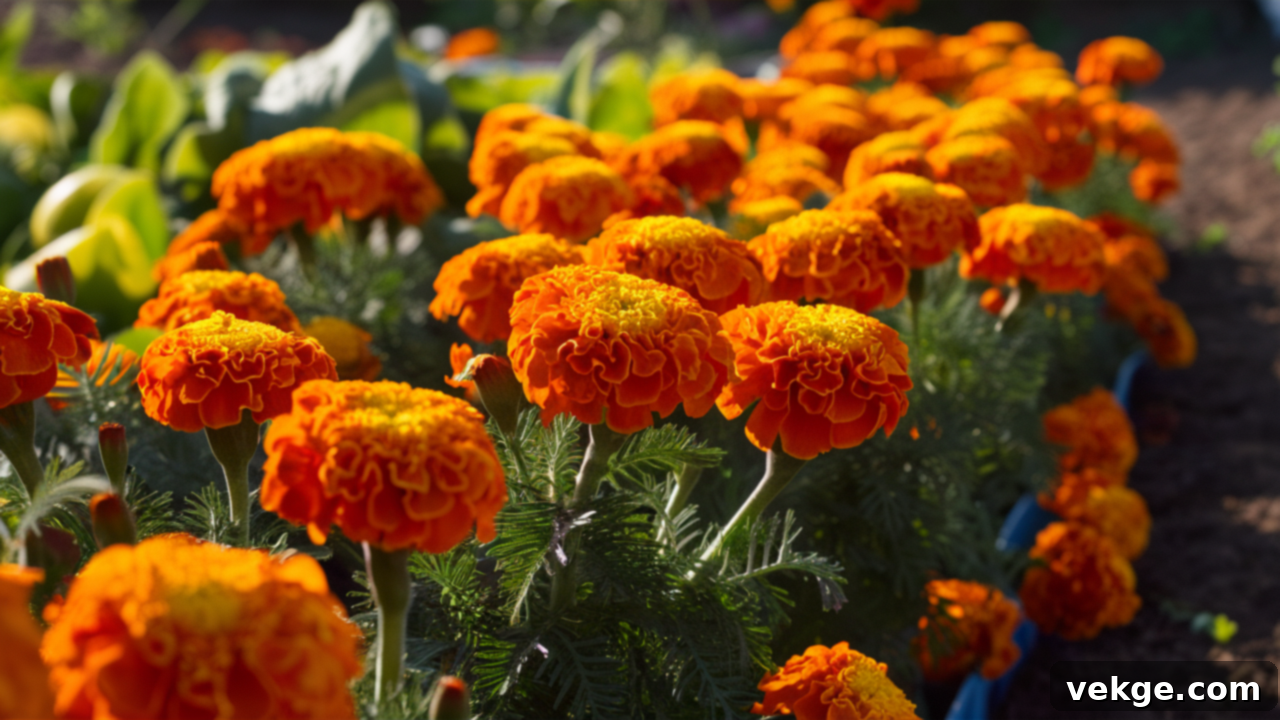
Marigolds are celebrated for their cheerful orange and yellow blooms, but their true power lies in their pungent, musky scent. This aroma, due to compounds like terthienyls, acts as a potent deterrent for not only flies but also mosquitoes, nematodes, and even aphids. They are perfect for companion planting in vegetable gardens, protecting sensitive crops from pests. Plant marigolds in garden beds, around patios, or near doorways to establish an effective protective barrier.
Care Tips: Marigolds are incredibly easy to grow and thrive in full sun (at least 6 hours daily) and well-draining soil. They are relatively drought-tolerant once established but benefit from regular watering during dry spells. Deadheading spent flowers will encourage continuous blooming throughout the season, maximizing their repellent output. Beyond fly control, marigolds improve soil health and can be used as a trap crop to draw pests away from more delicate plants nearby.
7. Citronella Grass (Cymbopogon nardus or Cymbopogon winterianus)
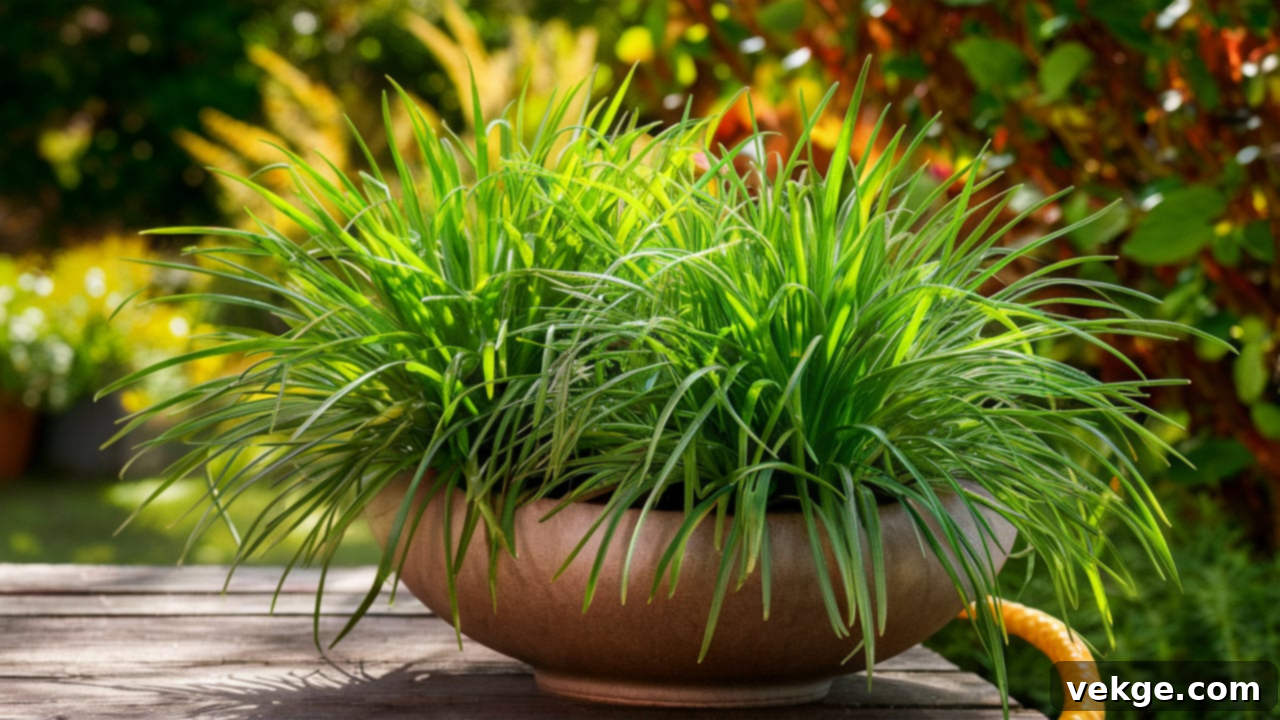
Often associated with outdoor candles, the actual citronella grass plant is far more effective at repelling flies and mosquitoes. Its distinctive grassy, lemon-like scent contains citronellal, geraniol, and limonene, which confuse flying insects, masking the scent of potential hosts and deterring them from landing. Citronella grass thrives in warm climates and makes an excellent addition to large pots or as a border plant along garden edges or walkways.
Care Tips: Citronella grass requires full sun and consistently moist, well-draining soil. It can grow quite large, so ensure it has ample space or prune it regularly to manage its size. To release more of its potent oils, simply brush against the plant or gently crush a few leaves. Placing it near outdoor seating, grilling areas, or children’s play zones can significantly reduce fly activity during peak summer months. In cooler climates, it can be grown as an annual or brought indoors for winter.
8. Rosemary (Salvia rosmarinus)
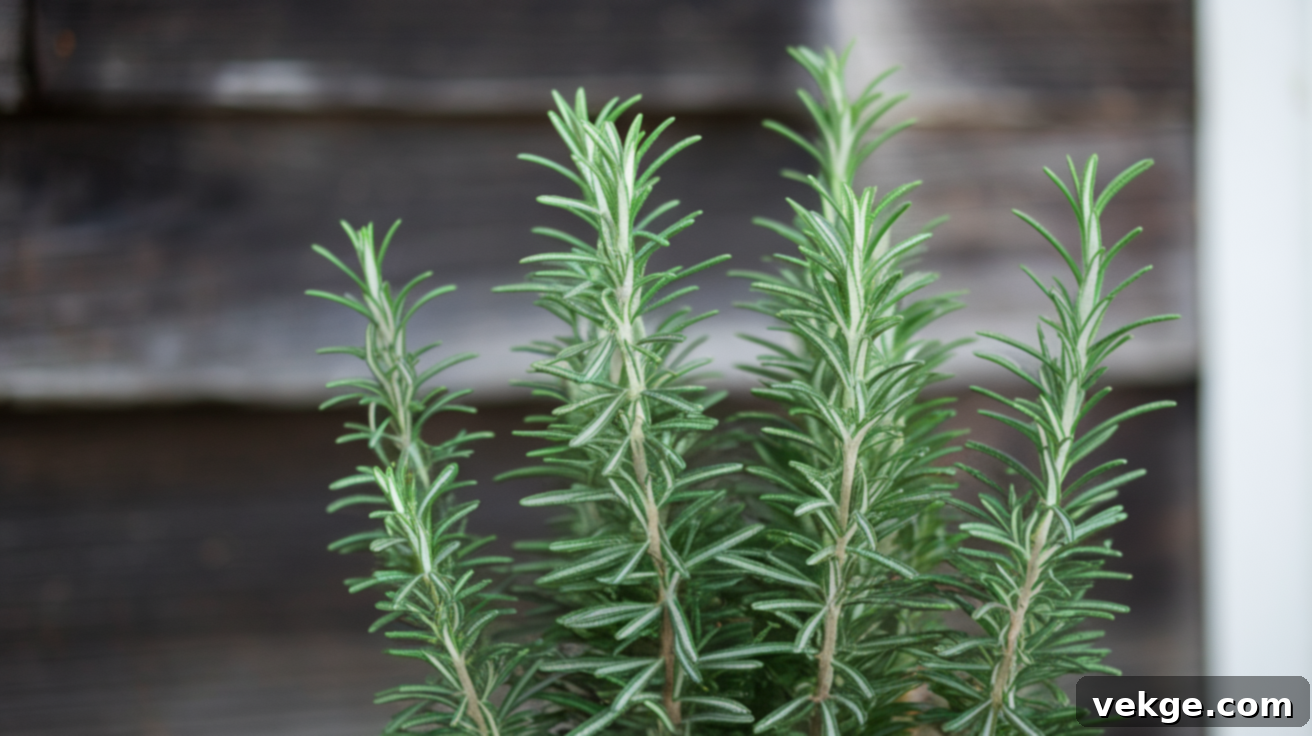
Rosemary is a robust and highly aromatic herb known for its strong, piney, and woody scent that flies and mosquitoes despise. Its essential oils, rich in camphor and cineole, make it a powerful natural deterrent. This drought-resistant plant thrives in sunny, dry conditions, making it an excellent choice for patios, rock gardens, and container planting near outdoor seating areas and grills.
Care Tips: Rosemary needs full sun (at least 6-8 hours) and well-draining, sandy soil. It prefers to dry out between waterings and is quite tolerant of neglect once established. Regular pruning not only keeps the plant bushy and healthy but also encourages the release of its potent scent. Clipping sprigs can be used fresh for cooking or dried for long-term use. For an extra boost, toss a few sprigs onto hot coals in a grill or fire pit to create a fragrant, fly-repelling smoke.
9. Bay Laurel (Laurus nobilis)
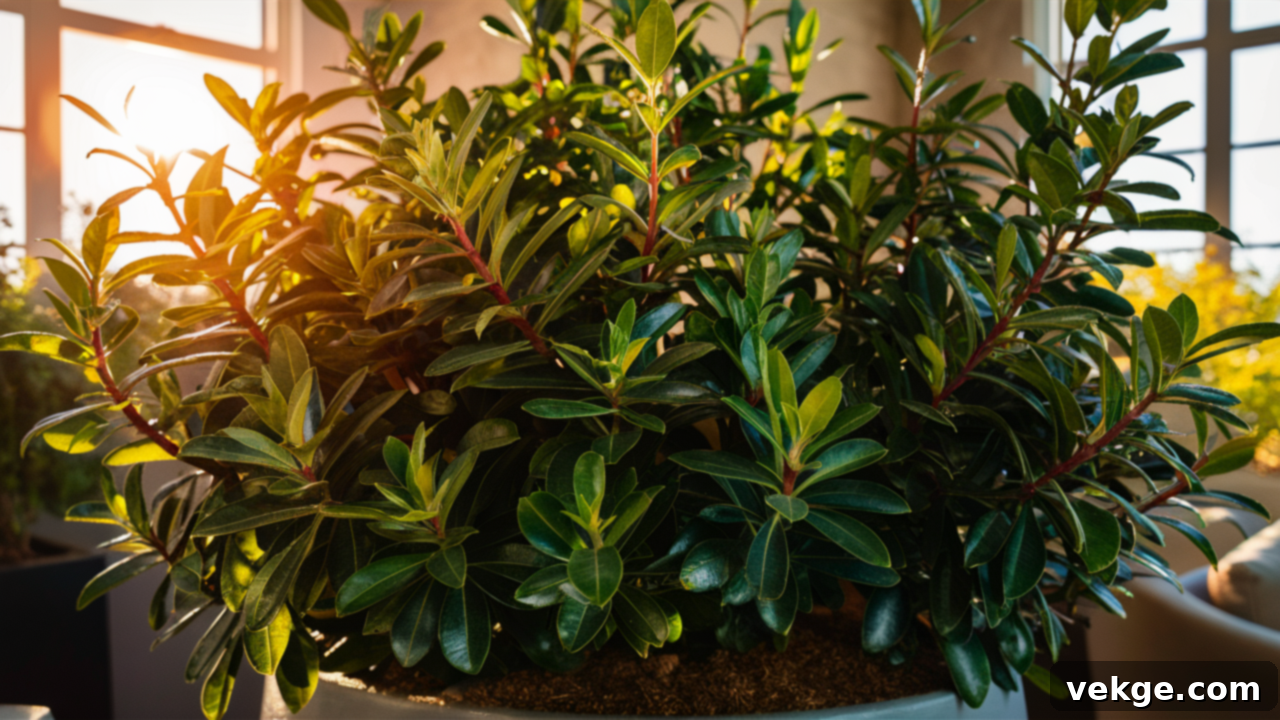
Bay laurel, often grown as a small shrub or tree, is a classic herb with a rich history in both culinary and medicinal uses. Its leathery, aromatic leaves, when crushed, release essential oils (primarily eucalyptol) that flies find highly offensive. Plant bay laurel in large containers or garden beds near windows, entryways, or outdoor dining areas to create an elegant and effective fly deterrent. In warmer climates, it can remain evergreen year-round.
Care Tips: Bay laurel prefers full sun to partial shade and well-draining soil. It is relatively slow-growing but can be pruned and shaped as it matures. Water regularly during dry periods, but ensure the soil isn’t constantly soggy. Fresh or dried bay leaves can be harvested for use in soups, stews, and sauces, adding another layer of utility to this beautiful pest-repelling plant. Its stately presence also adds structure and a sophisticated herbal fragrance to any outdoor space.
10. Lemongrass (Cymbopogon citratus)
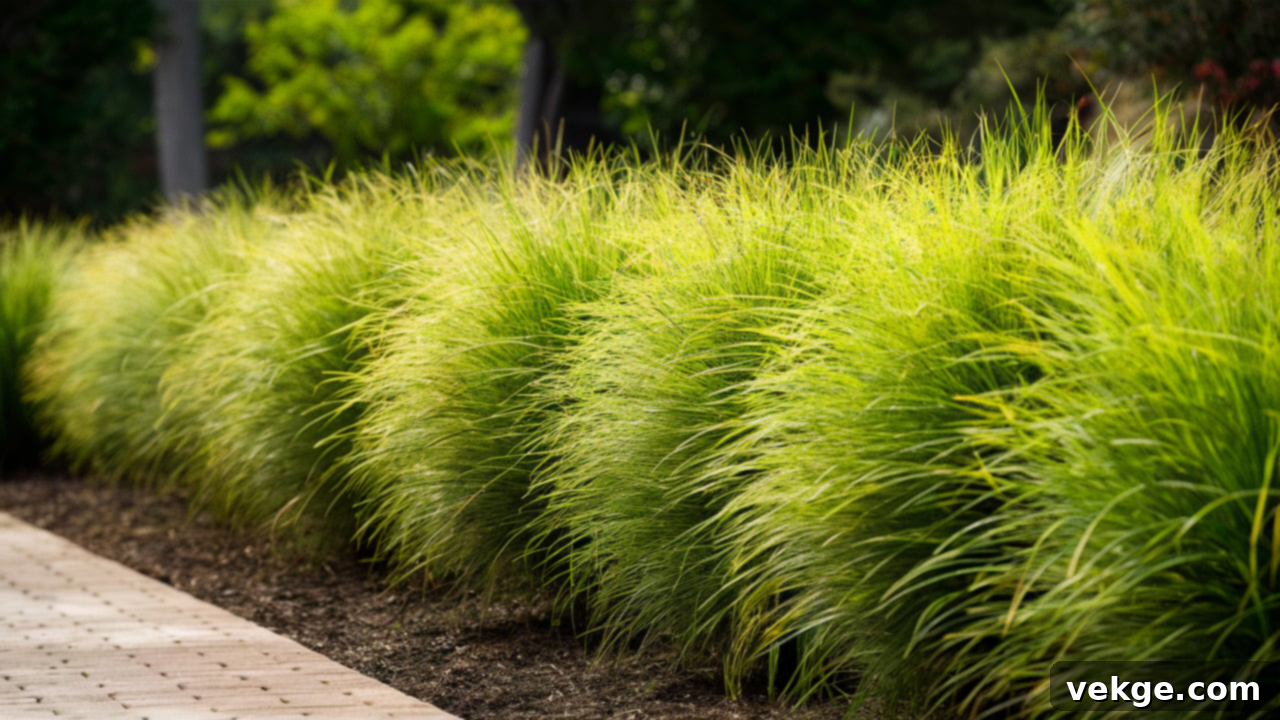
Closely related to citronella grass, lemongrass is a fantastic ornamental and functional plant that grows in tall, graceful clumps. It contains natural citronella oil, making its strong citrusy scent highly effective at repelling flies, mosquitoes, and other flying insects. Lemongrass is ideal for lining pathways, around decks, or in large decorative pots, where its architectural form adds a tropical touch to your landscape.
Care Tips: Lemongrass thrives in full sun (at least 6-8 hours) and rich, well-draining soil. It needs plenty of space to spread and benefits from consistent moisture, especially during warm weather. The plant’s strong scent intensifies over time, creating a broad protective zone. Regular harvesting of the lower stalks for culinary use (teas, curries, soups) not only provides fresh ingredients but also encourages vigorous growth and maximizes the release of its repellent oils. In colder regions, it can be grown as an annual or brought indoors for the winter.
Versatile and Pet-Safe Fly Repellent Plants: Protection for the Whole Family
For homes with children, pets, or even backyard chickens, choosing plants that are both effective and non-toxic is paramount. These versatile options help deter flies while ensuring the safety of your loved ones. Most can be used in mixed planters, borders, or shaded corners, offering flexible solutions for various environments. While “pet-safe” generally means non-toxic if ingested, it’s always wise to supervise pets around plants and consult a veterinarian for any concerns.
11. Scented Geranium (Pelargonium spp., Scented varieties)
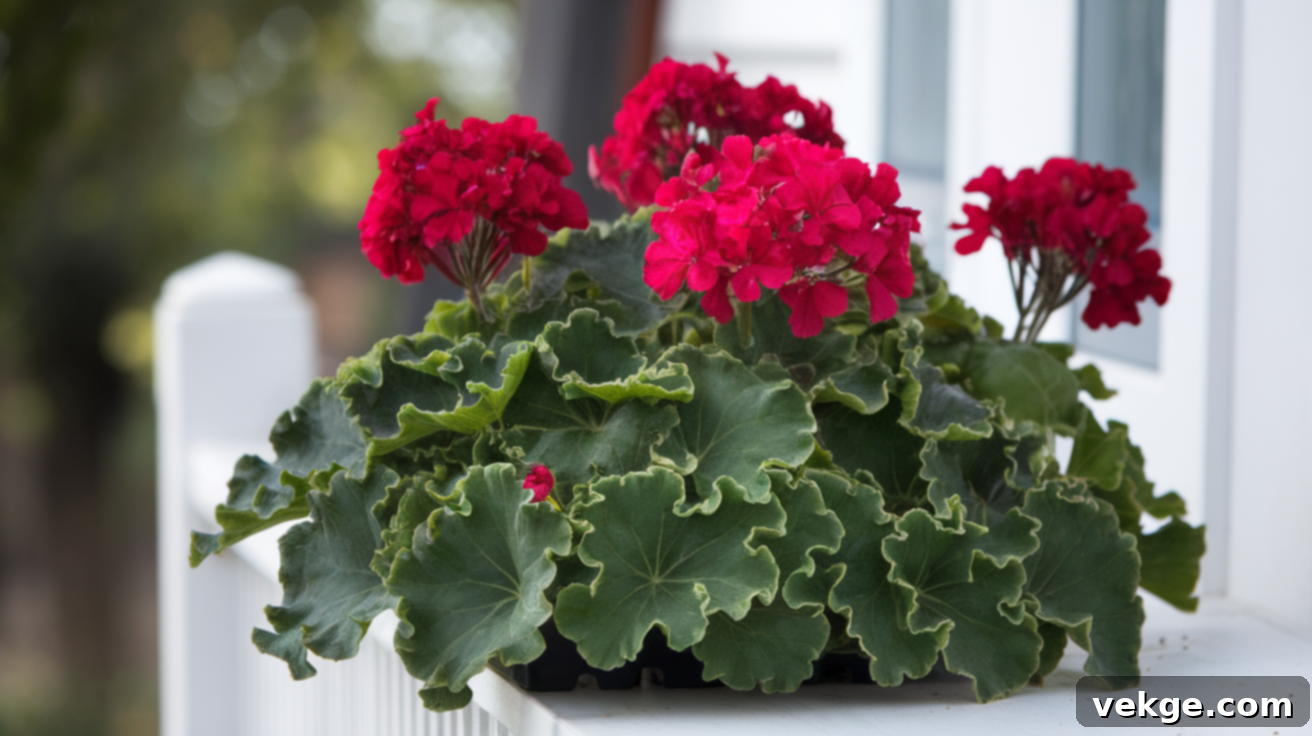
Scented geraniums are unique for their leaves, which release a delightful fragrance when touched. Varieties like ‘Citronella’ or ‘Lemon Scented’ geraniums are particularly effective against flies and mosquitoes due to their strong citrusy notes. These plants are ideal for porch railings, patio edges, or near picnic tables, where their scent can be easily released by a gentle brush. They come in a wide array of scents, including lemon, rose, peppermint, and nutmeg, offering both pest control and sensory pleasure.
Care Tips: Scented geraniums prefer full sun and well-draining soil. They are relatively drought-tolerant and thrive in pots or hanging baskets. Pinching back the leaves and stems regularly not only encourages bushier growth but also helps to release more of their essential oils into the air. While generally considered safe, some varieties might cause mild skin irritation in sensitive individuals or upset stomachs if large quantities are ingested by pets, so place them thoughtfully.
12. Sweet Woodruff (Galium odoratum)
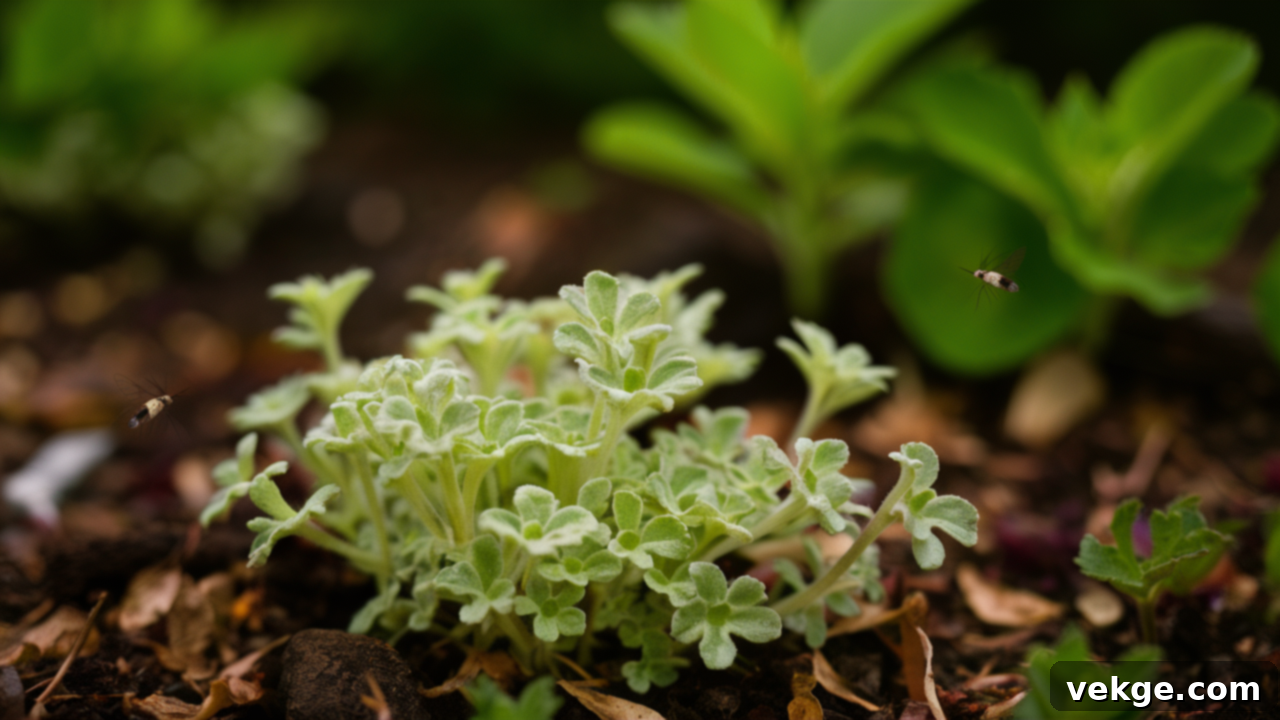
Sweet woodruff is a low-growing, shade-loving groundcover that releases a subtle, vanilla-like scent when its leaves are bruised or dried. This pleasant aroma, derived from coumarin, is generally disliked by flies. While not as intensely repellent as mint or citronella, it provides gentle deterrence, especially in cooler, shadier parts of the garden where other fly-repelling plants might struggle. It’s also considered safe for most pets and chickens.
Care Tips: Sweet woodruff thrives in partial to full shade and consistently moist, rich soil. It spreads readily, forming a beautiful green carpet under trees or in shaded borders. It requires minimal care once established, beyond ensuring it doesn’t dry out completely. The dried leaves retain their fragrance and can be used indoors in sachets or potpourri, offering a pleasant aroma while subtly deterring flies from closets or drawers. It’s a wonderful choice for adding subtle pest control to often-overlooked shaded areas.
13. Sage (Salvia officinalis)
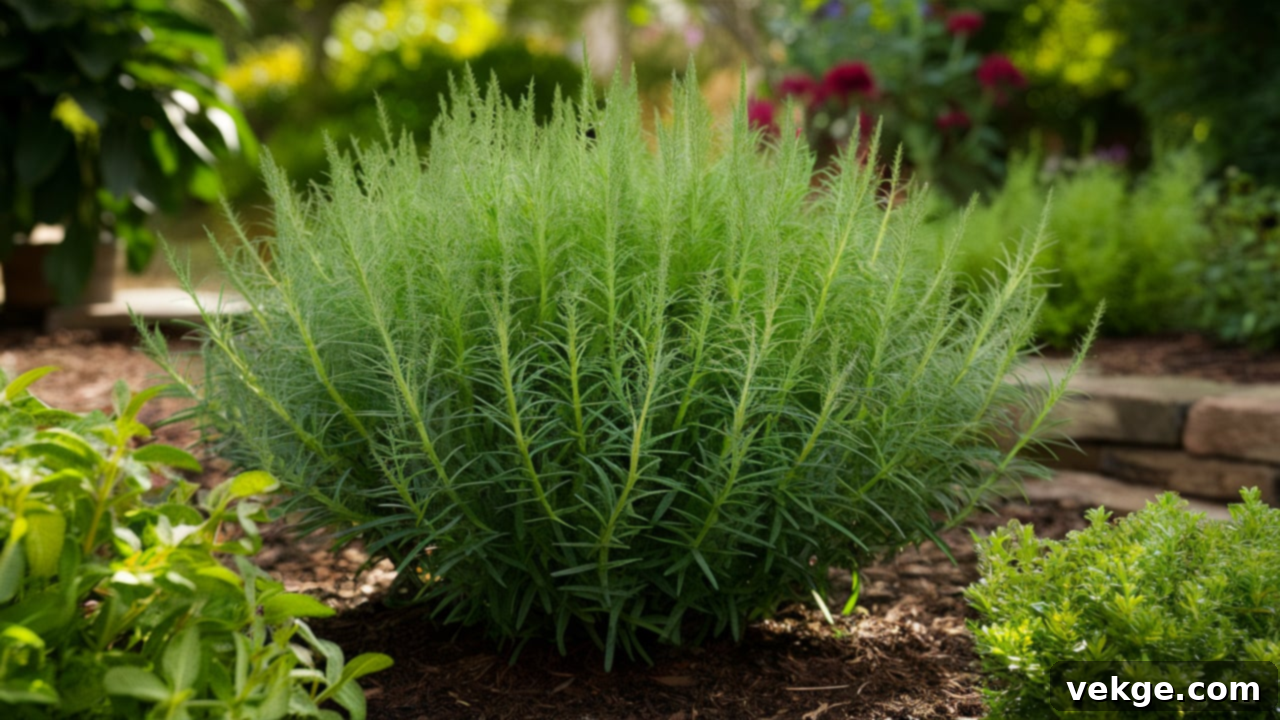
Sage is another incredibly versatile herb that serves dual purposes: it adds earthy flavor to your meals and effectively repels many flying insects, including flies and mosquitoes. The strong, herbaceous scent, rich in thujone and camphor, becomes even more potent when the leaves are gently bruised or burned. Sage is an excellent choice for raised beds, patio containers, or herb gardens, especially in active outdoor spaces.
Care Tips: Sage prefers full sun and well-draining soil, thriving in conditions that allow it to dry out between waterings. It’s quite drought-tolerant once established. Regular trimming not only keeps the plant full and bushy but also encourages the release of its repellent oils. Sage is generally safe for pets in moderation, making it a strong choice for families. Bundled and dried sage can also be safely burned outdoors as a natural incense, creating a powerful fly-repelling smoke during evening gatherings.
14. Tansy (Tanacetum vulgare)

Tansy is a flowering plant with distinctive button-like yellow blooms and a very strong, somewhat camphoraceous scent that insects, particularly flies, detest. It has historically been used near chicken coops, compost bins, and other areas prone to fly infestations. While highly effective at pushing flies away, it’s crucial to note that tansy is toxic if ingested by pets and livestock, as it contains compounds like thujone. Therefore, it’s best suited for areas where pets cannot easily access or consume it directly.
Care Tips: Tansy grows vigorously in full sun and well-draining soil and can spread rapidly, so it’s best to give it ample space or contain it. Regular trimming is essential to keep its growth in check. If managed carefully, dried tansy leaves can be placed in sachets or near outdoor trash areas to significantly reduce fly traffic during warmer months, but always ensure it’s out of reach of curious animals.
15. Catnip (Nepeta cataria)
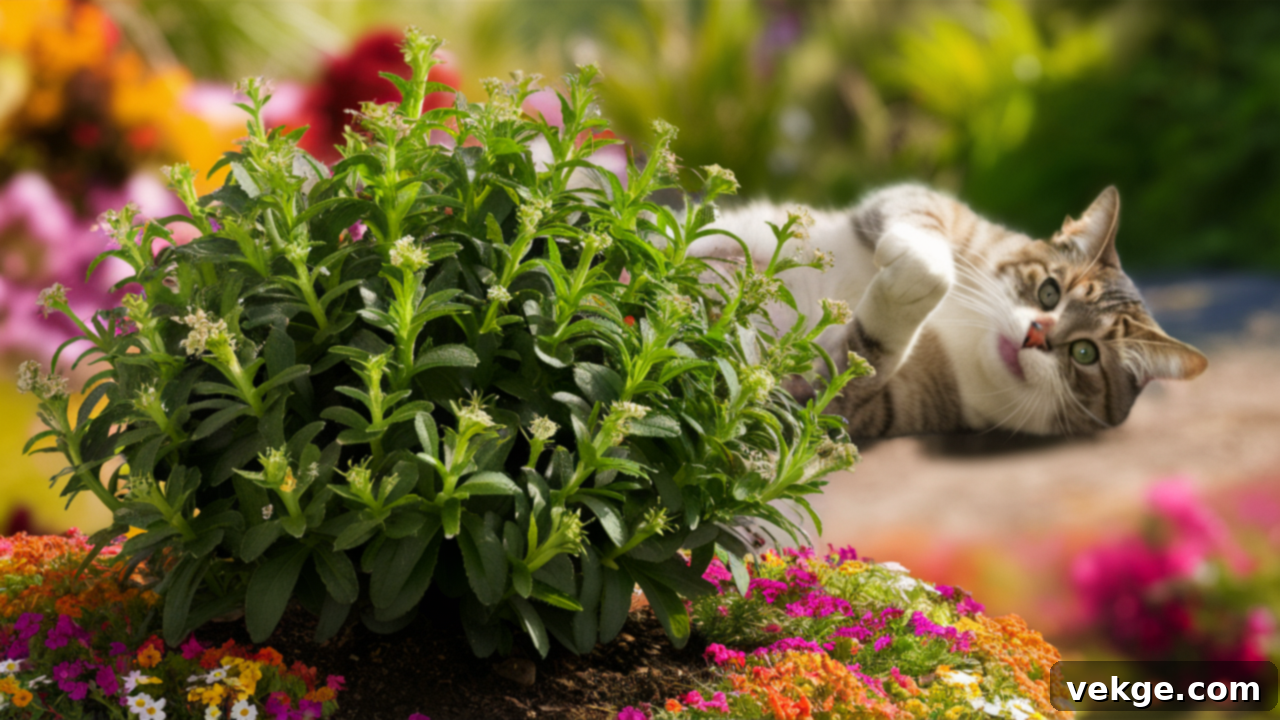
More than just a feline favorite, catnip is a surprisingly potent natural fly repellent. Its essential oil contains nepetalactone, a compound that some studies have shown to be even more effective than DEET at repelling mosquitoes and other flying insects. Catnip can be grown in pots, raised beds, or near doorways and windows to create a repellent barrier. Just be prepared for potential feline visitors, as cats are irresistibly drawn to its scent!
Care Tips: Catnip is incredibly easy to grow and spreads quickly, so consider planting it in containers to manage its vigorous growth. It prefers sunny spots but can tolerate some partial shade. Water regularly, allowing the soil to dry out slightly between waterings. Regular trimming not only keeps it looking tidy but also encourages new growth and maximizes its repellent properties. Dried catnip can be stored and used in sachets near pantries or pet areas for long-term indoor fly prevention.
Placement Matters: Maximize Your Plants’ Fly-Repelling Power
The effectiveness of your fly-repelling plants isn’t just about what you grow, but also where you put them. Strategic placement ensures that their natural aromas are released where they can do the most good, creating invisible barriers against pests without the need for sprays or traps. Consider airflow, sunlight, and common fly entry points or gathering spots when positioning your green guardians.
For Windows and Doors: Fortifying Entry Points
Flies often enter homes through open windows and doors. Placing strong-scented herbs directly at these entry points creates a crucial first line of defense.
- Windowsills: Line your windowsills with potted basil, mint, or lavender. The sun warming the leaves will help release their essential oils, forming an aromatic shield that discourages flies from entering. Use wide, shallow pots for stability and aesthetic appeal.
- Doorways: Place larger potted plants like rosemary, lemon balm, or catnip on either side of entry doors. For tighter spaces, wall-mounted planters can be an excellent solution. Lightly brushing against the plants as you pass will release their scent.
- Ventilation: Ensure good air circulation around these plants to help disperse their repellent fragrances effectively throughout the immediate area, but avoid direct, strong drafts that might stress the plants.
- Enhance Scent: Gently rub a few leaves or stems of these herbs daily to release a concentrated burst of their oils, boosting their fly-repelling power. Regular trimming keeps the growth healthy and the scent fresh.
Around Patios and Seating Areas: Enjoying Outdoor Comfort
Flies can quickly ruin outdoor gatherings. Create comfortable, pest-free zones with strategic plant placement.
- Seating Arrangement: Arrange large pots of citronella grass, rosemary, marigolds, or lemongrass around outdoor tables, lounge chairs, and grilling stations. Grouping several plants together can create a more potent, overlapping scent barrier.
- Sunny Spots: Position these plants in areas that receive ample sunlight, as warmth helps to volatilize their essential oils, increasing their scent throw.
- High Traffic Zones: Place plants near areas where food is prepared or consumed outdoors. The strong scents will deter flies from lingering around your BBQ or picnic spread.
- Variety is Key: Combine different types of repellent plants in large mixed planters to offer a broader spectrum of deterrents against various flying insects.
Companion Planting in Vegetable Beds: Protecting Your Harvest
Integrate fly-repelling plants directly into your vegetable garden to protect your crops from flies and other common garden pests, naturally enhancing garden health.
- Border Planting: Plant rows of marigolds around the perimeter of your vegetable beds. Their scent can deter flies, nematodes, and even deer from approaching your prized vegetables.
- Intercropping: Place herbs like basil, mint (in contained pots to prevent spread), and sage among your vegetables. Basil is particularly effective near tomatoes, deterring tomato hornworms as well as flies. Mint can deter cabbage worms, too.
- Pest-Prone Areas: Identify crops that frequently attract flies (e.g., those with decaying fruit or strong-smelling foliage) and place repellent plants nearby.
- Even Spacing and Trimming: Ensure adequate spacing between plants to allow for good air circulation and growth. Regular trimming of the repellent plants will help release their oils into the surrounding air and soil, providing continuous protection.
Fly-Repelling Plant Maintenance Tips: Nurturing Your Natural Defenses
Healthy, vibrant plants are the most effective at repelling flies. With consistent, mindful care, your botanical guardians will thrive, emitting strong, continuous aromas all season long, whether indoors or outdoors. Think of it as a partnership: you provide the care, and they provide the protection.
- Water Regularly, Avoid Overwatering: Most fly-repelling herbs prefer consistently moist, but not soggy, soil. Allow the top inch or two of soil to dry out completely before watering again. Overwatering is a common killer, leading to root rot and weak plants. Adapt watering frequency based on climate, pot size, and plant type.
- Provide Adequate Light: The majority of these plants, especially sun-loving varieties like rosemary, basil, lavender, and marigolds, require at least 6 hours of direct sunlight per day to produce their potent essential oils. Indoor plants need a bright, sunny windowsill or supplemental grow lights. Insufficient light can lead to leggy growth and reduced scent.
- Trim for Shape and Scent: Regular pruning is vital. Snip off spent flowers, leggy stems, and outer leaves. This not only encourages fuller, bushier growth but also stimulates the plant to produce more essential oils, intensifying its repellent aroma. For herbs like basil and mint, pinching off flower buds directs energy back into leaf production, keeping the leaves flavorful and fragrant.
- Use Quality Soil and Pots: Opt for well-draining potting mixes, especially for container plants. Pots should have drainage holes to prevent water accumulation at the bottom, which can lead to root rot. Terra cotta pots are excellent for plants that prefer drier conditions, as they allow for better air circulation and moisture evaporation.
- Fertilize Lightly and Thoughtfully: While most herbs don’t require heavy feeding, a gentle, balanced, organic liquid fertilizer applied once a month during the active growing season (spring and summer) can support stronger stems, healthier leaves, and more vigorous oil production. Avoid over-fertilizing, which can lead to lush but less fragrant growth.
- Monitor for Plant Pests: Ironically, your fly-repelling plants can sometimes attract other pests. Regularly inspect your plants for signs of spider mites, aphids, or whiteflies. Treat infestations quickly with natural solutions like neem oil or insecticidal soap to keep your plants healthy and effective.
- Rotate Indoor Pots: If your indoor plants are receiving uneven sunlight from a single window, rotate their pots every few days. This helps the plant grow symmetrically and ensures all sides receive adequate light, promoting even, strong growth and consistent scent production.
- Replace Tired Plants: Even with the best care, plants have a lifespan. If a plant becomes leggy, its scent diminishes significantly, or it repeatedly struggles despite your efforts, it may be time to replace it with a fresh, vigorous specimen to ensure continued fly protection.
Where to Buy Fly Repelling Plants and Seeds
Embarking on your natural fly control journey is made easy by the wide availability of fly-repelling plants and seeds. Whether you prefer the convenience of online shopping or the personal touch of a local nursery, you have numerous options to source your green guardians.
- Online Retailers:
- Amazon: Offers an extensive selection of live plants, seeds, and starter kits for various herbs and flowering plants. You’ll find many varieties of basil, lavender, mint, marigolds, and even carnivorous plants, often with fast delivery options. Look for reputable sellers with good reviews.
- Etsy: A great platform for unique and small-batch seeds, as well as live plants from independent growers. You might discover rare varieties or organic options here, often accompanied by personalized advice from the seller.
- Nature Hills Nursery / Burpee / Johnny’s Selected Seeds: These specialized online nurseries offer a vast selection of high-quality seeds and bare-root plants, ensuring you get healthy, viable options for your garden. They also provide detailed growing guides.
- Large Retail Chains:
- Lowe’s and Home Depot: These home improvement giants carry a seasonal selection of herbs and flowering plants, including many fly-repelling varieties like basil, rosemary, lavender, and marigolds, available both in-store and online for curbside pickup or delivery. Their garden centers are typically well-stocked during spring and summer.
- Walmart: Offers affordable live plants and a wide range of seed collections, often sourced from third-party vendors. Check their garden section during warmer months for seasonal availability.
- Specialized Plant Providers:
- Bonnie Plants: Known for providing ready-to-plant herbs and vegetables, Bonnie Plants offers a wide range of fly-repelling herbs through their website and partner retailers (often found at Lowe’s, Home Depot, and local garden centers). These are typically robust, well-established plants ready for your pots or garden beds.
- Local Nurseries and Garden Centers: Your local nursery is an invaluable resource. Staff can offer personalized advice based on your local climate and specific growing conditions. You can also inspect the plants firsthand for health and vigor before purchasing. Many local nurseries offer home delivery or curbside pickup options, making it convenient to start growing right away. They often carry varieties specifically suited to your region.
When buying, always check plant health for any signs of disease or pests. For seeds, look for recent packaging dates to ensure good germination rates. Starting with healthy plants and quality seeds will set you up for success in creating your natural fly-free haven.
Conclusion: Embrace a Natural, Fly-Free Lifestyle
The persistent buzz and unsanitary presence of flies can quickly diminish the comfort and enjoyment of your home and garden. However, as we’ve explored, there’s a simple, elegant, and highly effective solution waiting to be cultivated: fly-repelling plants. By integrating these aromatic and often beautiful botanical allies into your living spaces, you can create a sanctuary that smells wonderful to you but is utterly uninviting to pests.
From your kitchen windowsill adorned with fresh basil to a patio bordered with fragrant lemongrass and rosemary, these plants offer a sustainable, chemical-free defense. You now possess a comprehensive toolkit: a diverse selection of plants tailored for both indoor and outdoor environments, strategic placement techniques to maximize their efficacy, and essential care tips to ensure their continuous vitality. This guide empowers you to cultivate your very own living line of defense against summer’s most common annoyance.
Many of these remarkable plants pull double duty, serving not only as natural pest deterrents but also as culinary herbs, beautiful ornamentals, or even soothing aromatherapy elements that you can enjoy year-round. Start with a few favorites, observe their effectiveness, and gradually expand your botanical arsenal. Embrace the power of nature to transform your home and garden into truly comfortable, serene, and, most importantly, fly-free zones.
Ready to discover even more ways to enhance your living space with natural solutions? Explore our other plant and garden guides for simple, actionable tips that can immediately elevate your home and outdoor comfort.
